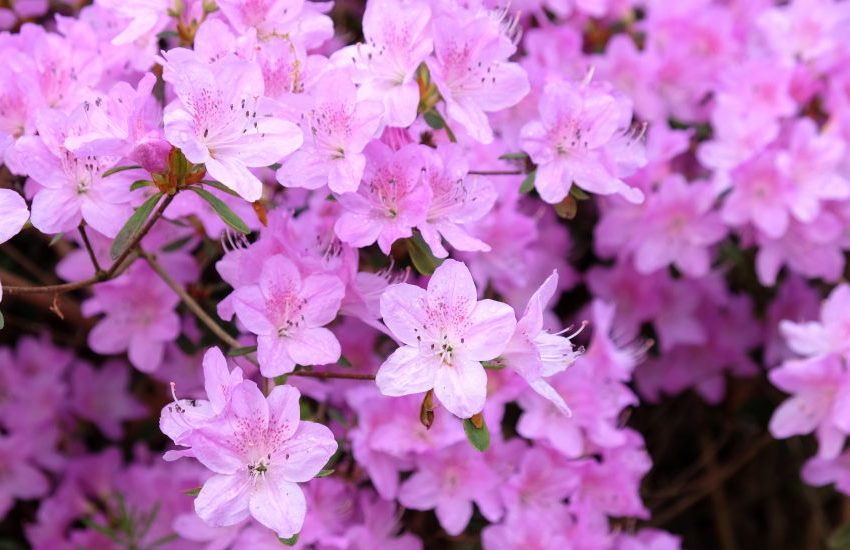Mango Tree’s Lifespan Explained
Introduction
Mango is a sweet fruit from a tree, as you probably already know. They are used in many dishes and desserts. But beyond that, do you know the mango tree’s lifespan?
Typically, mango trees live well past 100 years, giving fruit until the late stages of their life cycle. Mango trees planted from seeds usually take 7-8 years to give fruit. They will start producing mangoes in around five years if planted from saplings.
Before diving any deeper, let’s go back and check the basics and see why these trees are loved this much.
What is a Mango?
Mango is a sweet fruit native to South Asia and one of the most highly cultivated tropical fruits.
The flesh of the mango, the part we eat, is yellow or orange, but the skin can be many colors. Red, yellow, orange, green, or a mixture of all these colors can be seen in the skin of a mango. It depends on the ripening process and some other chemical processes that affect the outward appearance of the mango.
Mango belongs in the category of fruits that are called “stone fruits.”
What is a Stone Fruit?
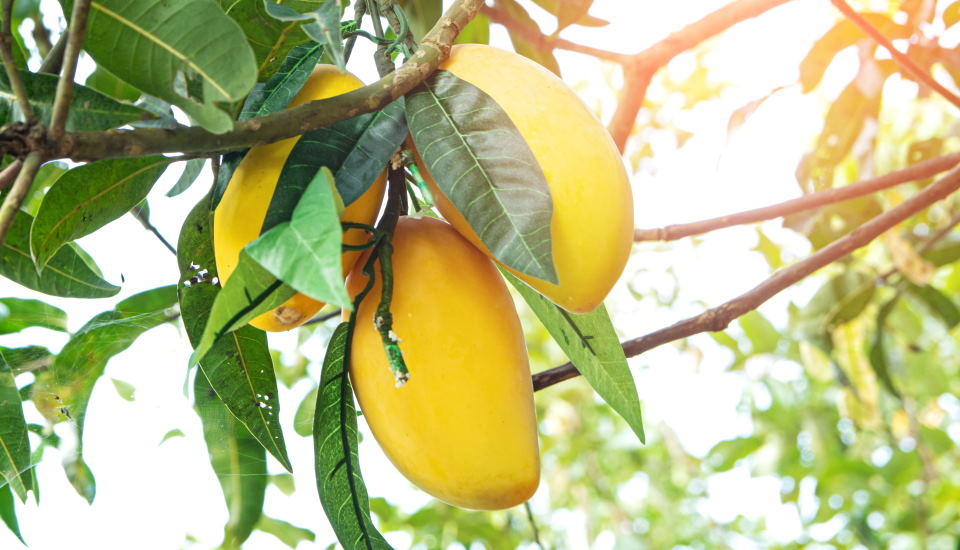
Stone fruits are fruits that contain a stone in the center. The seed is found inside the stone. You can cut open the stone to obtain the seed. This is important to know if you are looking to grow a mango tree from a mango seed.
Other popular stone fruits are peaches, apricots, cherries, nectarines, plums, and dates.
What Type of Tree is a Mango Tree?
Mango trees are evergreen trees, and their leaves last many years.
As one of the most cultivated tropical fruits in the world, the mango tree is a very adaptable tree. Their size, shape, and color differ depending on where it is cultivated.
These trees can live for a very long time, and they produce fruit almost until they die.
Let’s dive into the life span of a mango tree.
Mango Tree Growth Stages
Mango trees go through four main stages during growth. Here they are:
Seedling Stage
The seedling stage lasts around two years. The mango tree will be very small during this period and will not produce any fruit.
Vegetative Stage
The mango tree starts to grow rapidly during the vegetative stage. It will reach its full height and form flowers during this period, but it will not start producing fruit until the flowering stage.
Flowering Stage
The tree will start to produce more and more flowers and fruits during this period. The flowers eventually will get pollinated by bees and other insects and start developing mangoes.
Fruiting Stage
During the fruiting stage, the tree starts to produce large quantities of sweet and juicy mangoes. The tree will continue to produce fruit for many years if it gets enough sunlight and water and is taken care of properly.
By making sure your tree gets enough sunlight, water, and nutrients, you can enjoy its fruits for many years.
What is Mango Tree’s Lifespan?
A mango tree typically lives over 100 years and gives fruit until the end of its lifetime.
Let’s check the different stages of a mango tree’s life, from planting to maturity to the end. Here are some things you may expect while growing a mango tree;
Planting and Early Life of a Mango Tree
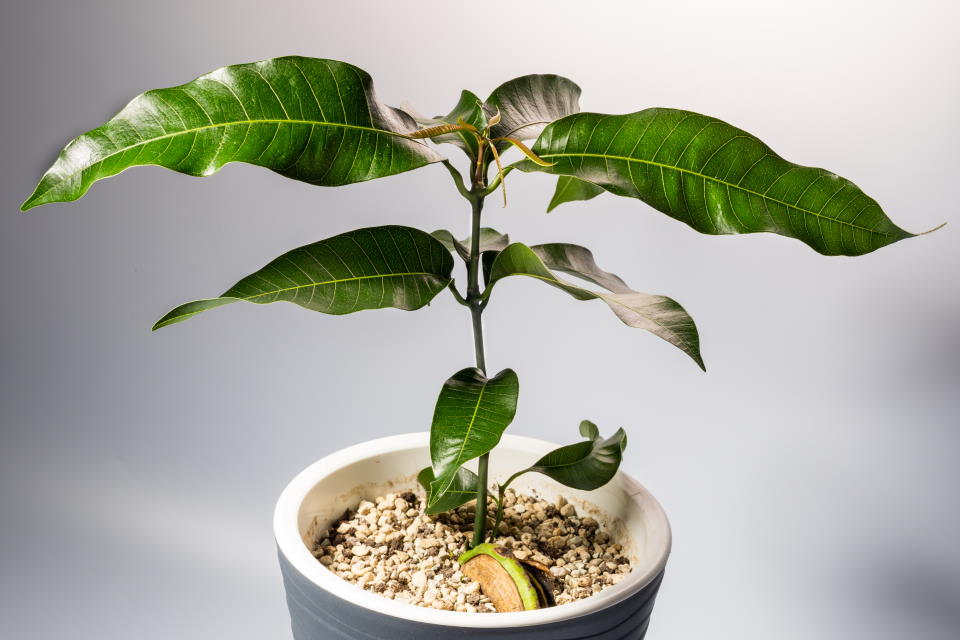
To plant a mango tree, you must start from the stone.
You can follow these steps to plant a mango seed and grow a mango tree!
- Cut open the mango to reach the stone.
- Clean the stone until you see the husk without many mangoes left on it.
- Grab a pair of heavy scissors and cut open the stone.
- Squeeze the mango seed out of the stone.
- Clean the seed.
- Wrap the seed into a paper towel and put it into a bag until it sprouts. Check often to make sure that you don’t leave it there for too long after it sprouts.
- Plant the seed in potting soil.
- Watch and let it grow!
- Re-pot the mango tree as it grows and eventually plant it directly into the ground.
To create some insulation around the base of the tree, cover the roots of your little mango tree with a few inches of shredded mulch.
If there are any cracks in the soil around your tree, fill them in with new soil.
Growing a Mango Tree to Maturity
If you are planting a mango tree from the seed, typically, you need to wait around 5 to 8 years before starting to get any fruit.
Planting seeds is not the only way to go, though. Planting saplings will drastically lower your waiting time. A mango tree sapling will start giving fruit about after four years it is planted, significantly quicker compared to a mango tree planted from seed.
Saplings are often already a few years old when you are purchasing them, and it can be an important factor if you want to get fruit as soon as possible.
How a Mango Tree’s Life Ends
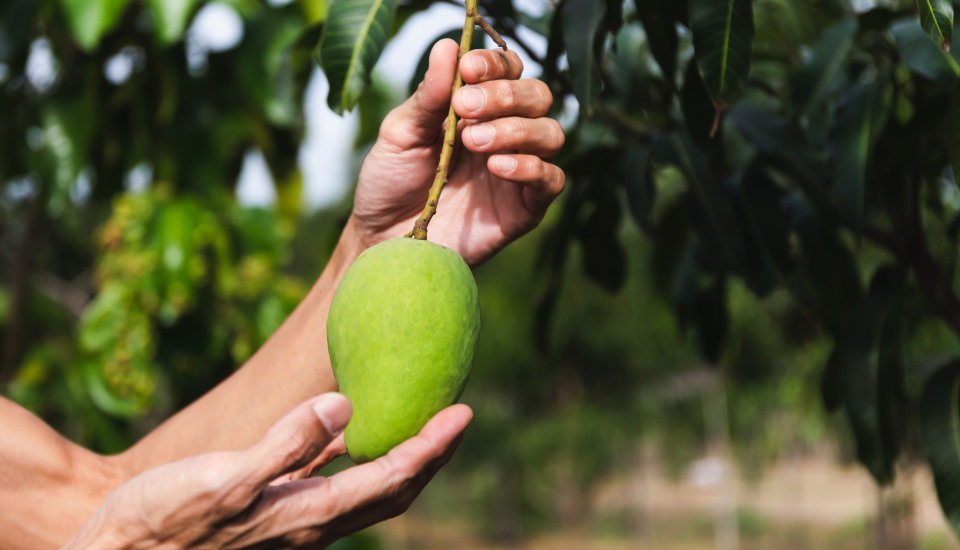
The oldest living mango tree is 300 years old and still producing mangoes! It is located in East Khandesh, India.
So, saying that a mango tree lives over 100 years is actually an understatement.
How Long Will a Mango Tree Give Fruit?
Mango trees can start producing fruit as young as five years after being planted from the seed and can give fruit until the very end of their life span. The oldest mango tree, which is 300 years old in India, is still giving fruit.
So, mango trees produce fruit from the early mature life to the end of their life.
This means that theoretically, if every mango tree lived as long as the oldest one, each tree could give fruit for 295 years!
What Factors Affect the Mango Tree’s Lifespan?
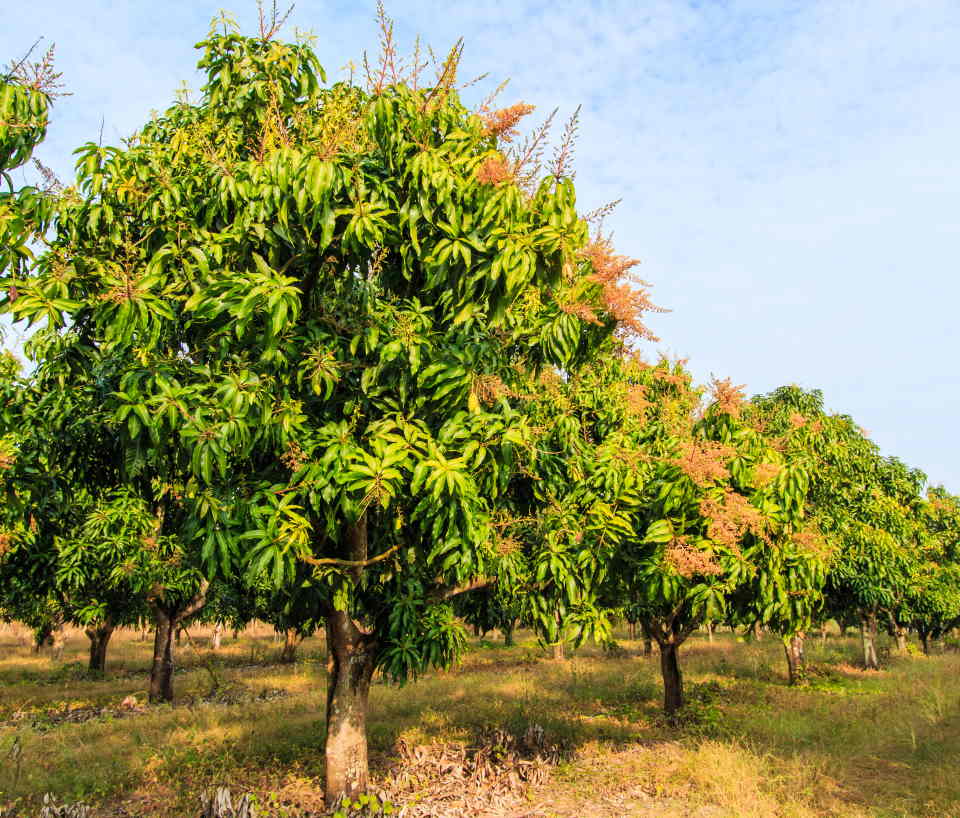
Sunlight
Trees need sunlight to grow and thrive. Mango trees need at least six hours of sunlight every day. They need to stay longer under the sun to make food for themselves through photosynthesis. With photosynthesis, it produces sugar to consume.
When the tree gets enough sunlight every day, it enlengthens its lifespan. If the tree is not getting enough sunlight, it may cause yellowing of the leaves and give smaller and lower quality fruits.
Rainfall
Young mango trees need to be watered regularly until they establish themselves for around two years. Mature trees don’t need water that much, but they still do. Rainfall helps them grow well.
Usually, people don’t water their trees, but if there is no rain for months on end, it is a good idea to water your mango tree.
Also, if there is too much rain for many consecutive days, the tree can experience stress, drown or develop root rot. This also affects a mango tree’s lifespan.
Nutrients
Naturally occurring nutrients in the soil may be enough for your tree; some soil is naturally nutrient-rich. Others are not. It is still a good idea to fertilize your mango tree three times a year.
Be careful of overfertilization, though. Too much of anything is bad.
Pests and Diseases
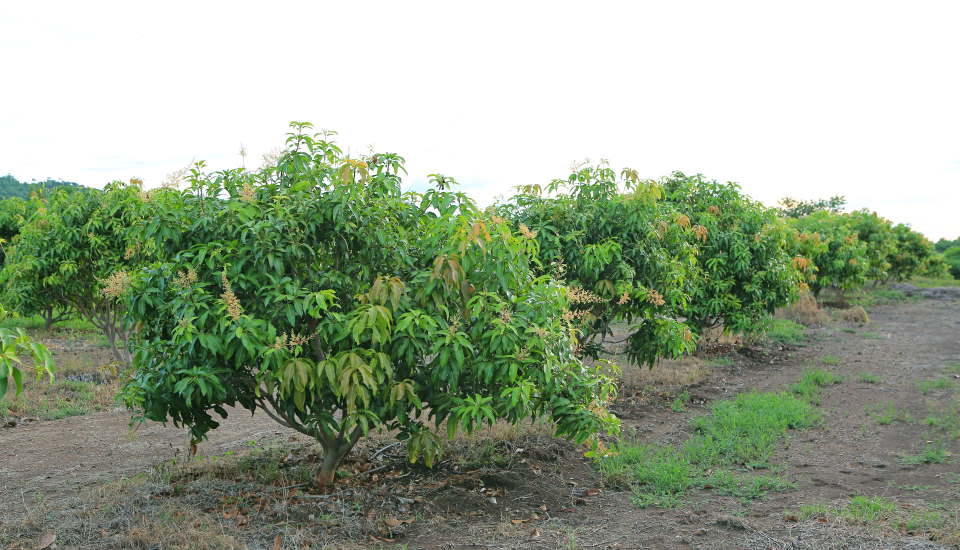
Pests and diseases can also affect the mango tree’s lifespan. Some pests feed on the tree and eat their leaves or fruit. Leaves are important for the mango tree to photosynthesize, so it is important for your mango tree’s lifespan.
Pests must be controlled by applying insecticides and pesticides.
Your tree can get sick, and two common diseases for mango trees are anthracnose and powdery mildew. These are fungal diseases; they attack and damage the panicles, flowers, and fruits. You can keep these diseases under control by using fungicides.
If a mango tree doesn’t have pests or diseases, it lives longer.
The average mango tree’s lifespan is 20-30 years, but they live much longer, more than 100, 200, or even 300 hundred years, if taken care of properly.
How to Grow a Mango Tree
As a reminder, you can plant a mango tree from the seed in a few easy steps. Let’s check them once more:
- Cut open your mango.
- Clean the stone.
- Cut open the stone and obtain the mango seed.
- Clean the seed.
- Wrap the seed into a wet paper towel and put it into a plastic bag until it sprouts. Check it often.
- Plant the seedling in potting soil.
- Watch it grow!
- Re-pot it as it grows and finally plant it into the ground.
These are the basic steps to planting a mango tree, but there is more that goes into growing it.
What is the Best Time of the Year for Growing and Harvesting Mangoes?
Mango is harvested in the warmer months of spring and summer. But when should you plant a mango tree to get the healthiest plant?
The best time to plant a mango tree is late winter to early spring.
The reason for this is the plant does not actively grow during this period of the year and will be better able to get rooted in the soil before active growth starts in the warmer months of the year.
Best Location to Grow Mangoes
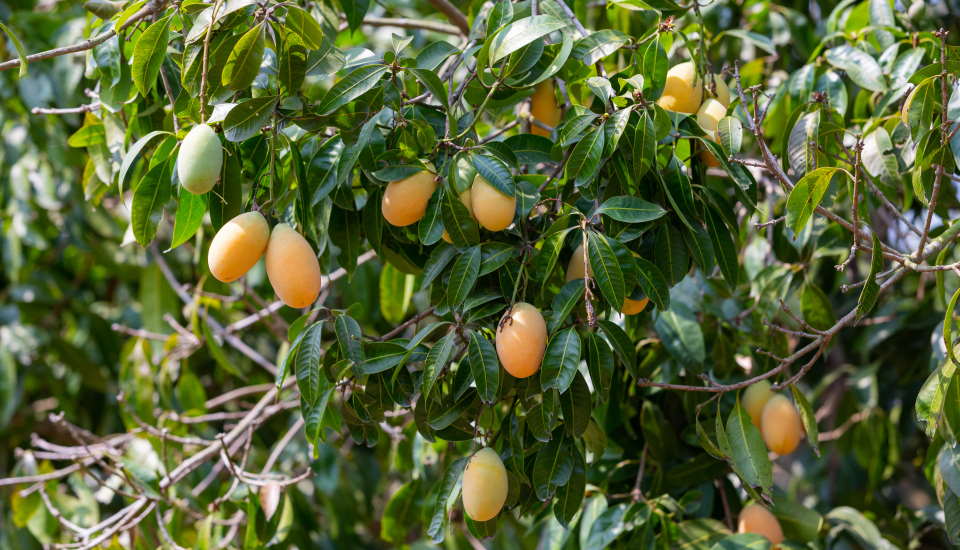
Do you know where exactly mangoes grow the best?
The best places for mango trees are tropical climates. That means anywhere in the USDA Hardiness Zone 9 and above. Basically, this means you should be planting mango trees in areas where the temperature does not fall below 20 degrees Fahrenheit.
Areas that tend not to have a frost are the prime candidates for mango trees, like Hawaii, California, Florida, and other areas along the Gulf of Mexico.
No matter where you plant your mango tree, it is a must to be aware of the hardiness zone and its implications.
Fertilize Your Mango Tree to Maximize Its Lifespan
You can fertilize your mango tree three times a year, every season except winter. You can start with a lower amount and then increase it as the tree gets bigger and mature.
Mango trees need many nutrients to grow at a healthy and stable rate. Balanced fertilizers with maybe a little high nitrogen content are best for your mango tree.
The necessary nutrients are phosphorus, potassium, and nitrogen (these three are called “The Big Three”), manganese, zinc, and iron. You can see the ratios on fertilizers like 5-5-5, 6-6-6 or 8-3-9, etc. These are the N/P/K ratios, and they refer to the before-mentioned big three of the nutrients. If there is a third number, it refers to magnesium. These mentioned ratios are all fine for the mango three as they all have either equal ratios or ratios with higher nitrogen content.
Different Ways to Use Your Mangoes
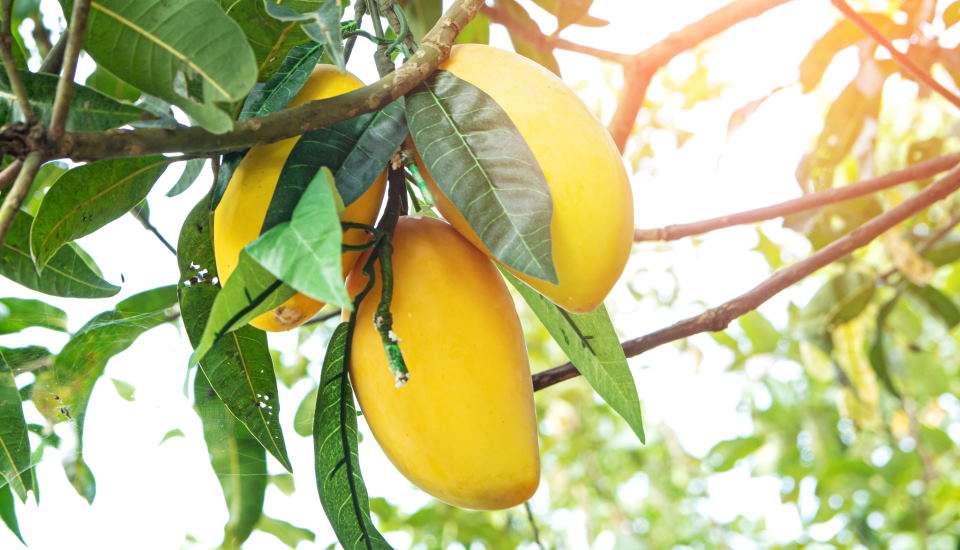
Now that you have planted, grown, and sustained your mango tree, what can you do with the beautiful fruit it produces? There are so many delicious dishes that use mangoes in them that it is hard to know where to start! We gathered a few dishes for you to start.
Mango Sticky Rice
This is a Thai classic served as a slightly sweet dessert that prefers the flavors of this fruit more than a dessert that is completely lost itself in sugar content.
This is a fun start if you want to get your kids to eat more fruit. You can add some blueberries along with the sticky rice and condensed milk for a healthy and fun dessert.
This is a warm and filling this which can be eaten at any time of the year, warm or cold!
Mango Popsicles
If you have some mango, you can go ahead and create your own popsicles instead of the heavily processed store ones.
Mango Salsa
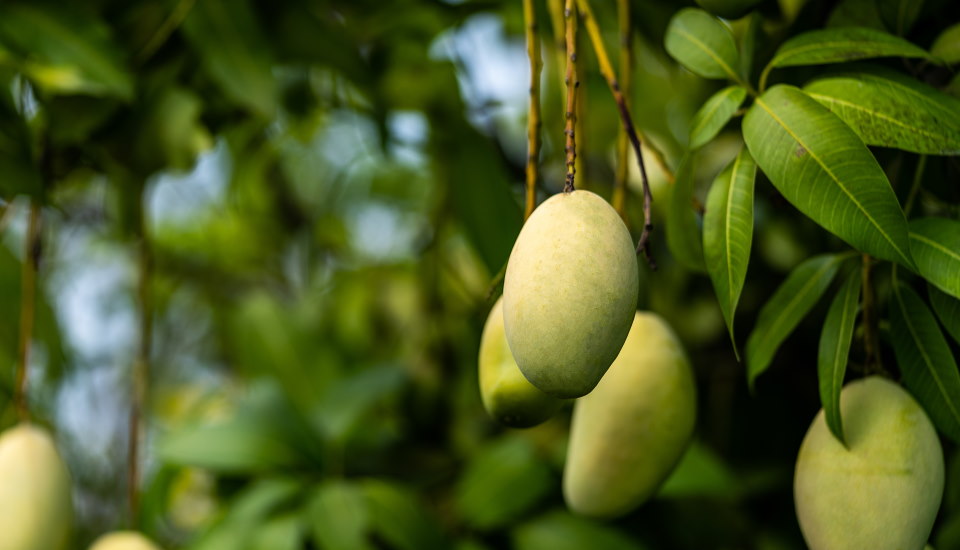
You can whip up a quick and easy mango salsa using some peppers, onions, mangoes, tomatoes, lime juice, plus whatever else you have to lay around the kitchen.
You can use it as a dip for some chips or slice the veggies into bigger chunks and eat it as a salad. It is a beautiful dish with crisp and fresh flavors.
Conclusion
The average mango tree’s lifespan is 20-30 years, but it can easily live more than a hundred years if it gets enough sunlight, water, and nutrients and is taken care of properly.
Make sure your tree gets what it needs, keep it safe from pests and diseases, and you can enjoy its beautiful fruits for generations!
You may also be interested in:
European Redbud Tree: How To Grow & Care


